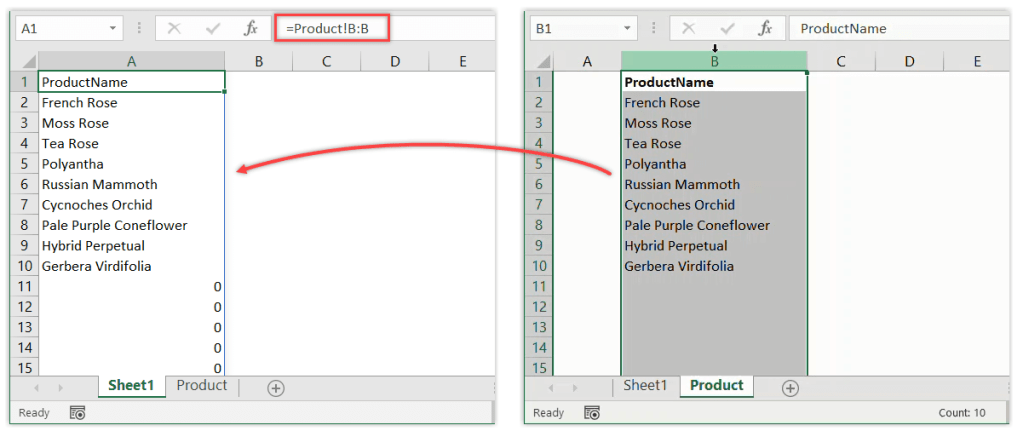Link Multiple Excel Sheets Easily: A Simple Guide

The quest to enhance productivity and streamline workflows in the digital age has led to the increasing use of Excel as a powerful tool for data management. Whether you're compiling financial reports, maintaining inventories, or analyzing datasets, linking multiple Excel sheets can significantly reduce the time and effort involved in data consolidation. This guide provides a step-by-step walkthrough on how to easily link multiple Excel sheets, ensuring that your work is more efficient and error-free.
Why Link Excel Sheets?

Linking Excel sheets isn’t just a technical trick; it’s a practical solution to common workplace problems:
- Efficiency: Update data in one sheet, and the changes reflect automatically across linked sheets.
- Data Integrity: Reduces the risk of manual entry errors since data from the source sheet will be the same in all linked sheets.
- Time-saving: Automating the data flow saves hours that would otherwise be spent copying and pasting information manually.
Basic Steps to Link Sheets

Here are the basic steps you can follow to link your Excel sheets:
- Open your Excel Workbook: Ensure that all the sheets you want to link are in the same workbook.
- Identify Source Cells: Determine which cells contain the data you want to link.
- Navigate to the Destination Sheet: Go to the sheet where you want to display the linked data.
- Use the Formula Bar: Start typing the formula to link the cells. Here’s how you do it:
- Click on the cell where you want the linked data to appear.
- Type an equal sign (=), then click on the tab of the source sheet.
- Select the cell in the source sheet whose data you want to link.
- Press Enter. The formula will now look something like this:
=‘Sheet1’!A1
⚠️ Note: If the sheet name contains spaces, enclose it in single quotes, e.g., ='Sheet Name'!A1
Advanced Linking Techniques

Beyond the basics, there are several techniques you can employ to make your linking more robust:
1. Named Ranges

Using named ranges makes your formulas more readable and easier to maintain. Here’s how:
- Select the range of cells you want to name.
- Go to the Formulas tab, click on “Define Name,” and enter a name for the range.
- In your destination sheet, use the named range in your formula like this:
=SheetName!NamedRange
2. Linking with Functions

Functions like INDIRECT, VLOOKUP, or INDEX and MATCH can be used for more complex linking:
- INDIRECT: Use to create a dynamic link that updates when the structure changes. Example:
=INDIRECT(“‘Sheet1’!A1”) - VLOOKUP: Good for pulling data from one sheet based on a lookup value from another.
- INDEX & MATCH: Provides a flexible way to retrieve data from different columns and rows.
3. Linking Between Different Workbooks

If you need to link data across different workbooks:
- Open both workbooks.
- In the destination workbook, start the formula with the workbook name enclosed in brackets, e.g.,
=[SourceWorkbook.xlsx]Sheet1!A1
Troubleshooting Common Issues

Here are some common pitfalls you might encounter when linking sheets, and how to address them:
- Broken Links: If a source sheet is renamed or moved, links break. Update the formula manually or use the
FINDandREPLACEfeature to correct references. - Relative vs. Absolute References: Ensure that cell references are absolute (e.g.,
Sheet1!A1) when necessary to prevent errors if rows or columns are inserted.
Conclusion

Linking multiple Excel sheets can revolutionize how you handle data, making your workflow more efficient and less prone to errors. With the techniques outlined in this guide, you can manage data across numerous sheets and workbooks with ease. From basic cell linking to advanced named ranges and function-based linking, the possibilities are vast. By mastering these skills, you’ll be able to streamline your data management, saving time and ensuring accuracy in your daily tasks.
What happens if I change the name of a linked sheet?

+
If you change the name of a source sheet, all formulas linking to it will break. You will need to manually update each formula to reflect the new sheet name.
Can I link data between different Excel files?

+
Yes, you can link data between different Excel files by using the workbook name in brackets, e.g., =[SourceWorkbook.xlsx]Sheet1!A1.
Are there any risks associated with linking Excel sheets?

+
Linking sheets can increase the risk of data corruption if the source workbook is not available or if the workbook structure changes significantly. It’s important to manage these links carefully and ensure that all linked files are accessible.